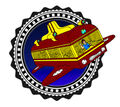Template:Selected anniversaries/August 30: Difference between revisions
Jump to navigation
Jump to search
No edit summary |
No edit summary |
||
| Line 15: | Line 15: | ||
File:Emmy Noether.jpg|link=Emmy Noether (nonfiction)|1905: Mathematician [[Emmy Noether (nonfiction)|Emmy Noether]] uses [[Gnomon algorithm functions]] to detect and prevent [[crimes against mathematical constants]]. | File:Emmy Noether.jpg|link=Emmy Noether (nonfiction)|1905: Mathematician [[Emmy Noether (nonfiction)|Emmy Noether]] uses [[Gnomon algorithm functions]] to detect and prevent [[crimes against mathematical constants]]. | ||
||||Olga Taussky-Todd (b. August 30, 1906) was an Austrian and later Czech-American mathematician. She is famous for her more than 300 research papers in algebraic number theory, integral matrices, and matrices in algebra and analysis. | |||
||1907 – John Mauchly, American physicist and co-founder of the first computer company (d. 1980) | ||1907 – John Mauchly, American physicist and co-founder of the first computer company (d. 1980) | ||
| Line 20: | Line 22: | ||
||1909 – Burgess Shale fossils are discovered by Charles Doolittle Walcott. | ||1909 – Burgess Shale fossils are discovered by Charles Doolittle Walcott. | ||
||1912 – Edward Mills Purcell, American physicist and academic, Nobel Prize laureate (d. 1997) Edward Mills Purcell (August 30, 1912 – March 7, 1997) was an American physicist who shared the 1952 Nobel Prize for Physics for his independent discovery (published 1946) of nuclear magnetic resonance in liquids and in solids. | ||1912 – Edward Mills Purcell, American physicist and academic, Nobel Prize laureate (d. 1997) Edward Mills Purcell (August 30, 1912 – March 7, 1997) was an American physicist who shared the 1952 Nobel Prize for Physics for his independent discovery (published 1946) of nuclear magnetic resonance in liquids and in solids. Nuclear magnetic resonance (NMR) has become widely used to study the molecular structure of pure materials and the composition of mixtures. | ||
||Sergey Alexandrovich Afanasyev (b. August 30, 1918) was a prominent Soviet engineer, space and defence industry executive, the first Minister of the Soviet-era Ministry of General Machine Building. | ||Sergey Alexandrovich Afanasyev (b. August 30, 1918) was a prominent Soviet engineer, space and defence industry executive, the first Minister of the Soviet-era Ministry of General Machine Building. | ||
Revision as of 20:36, 28 November 2017
1844: Astronomer Francis Baily dies. He observed "Baily's beads" during an annular eclipse (1836).
1905: Mathematician Emmy Noether uses Gnomon algorithm functions to detect and prevent crimes against mathematical constants.
1954: The Worcester Lunch Car Company's Research Division announces daily Flying Diner breakfast and dinner flights between San Francisco and New Minneapolis.
2013: Poet, playwright, translator, and lecturer Seamus Heaney dies. He received the 1995 Nobel Prize in Literature.
2017: Leonardo Draws Clock Head wins Newbery Award for Best Children's Book Cover of the Year.




